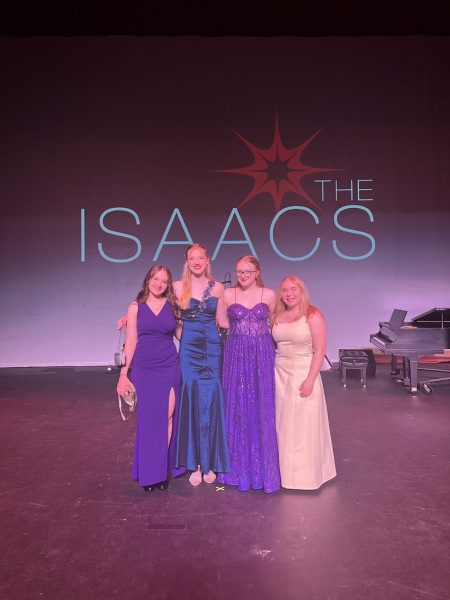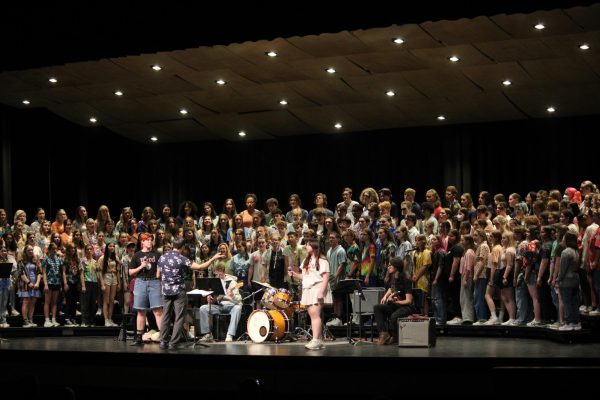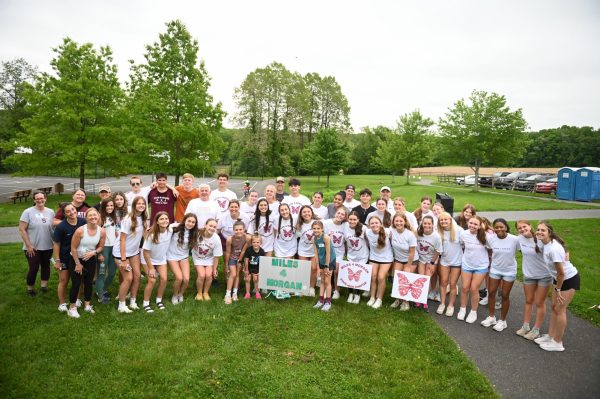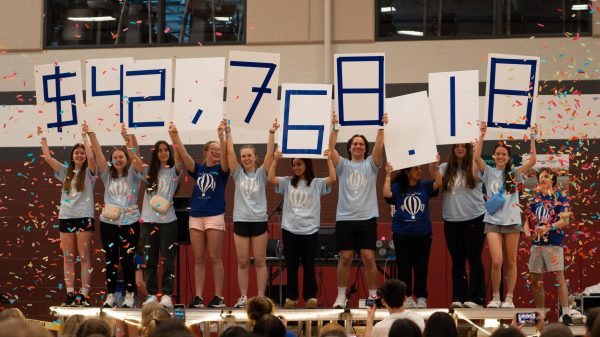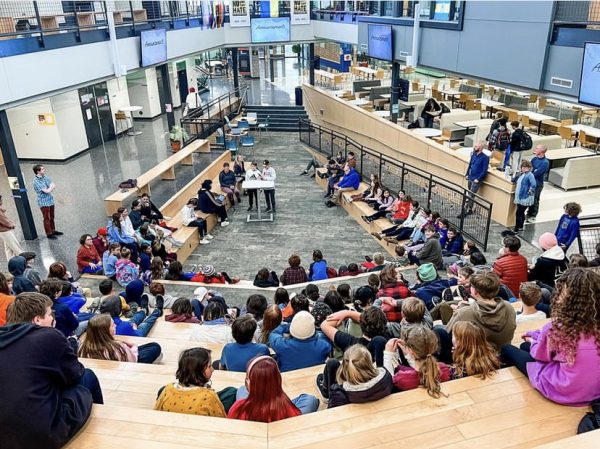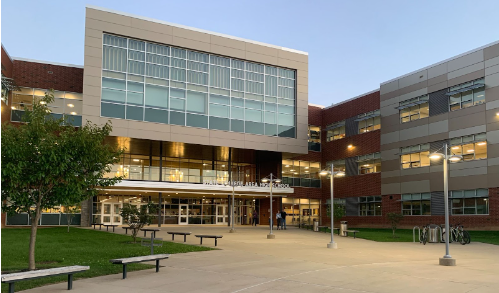The Core of Food Fights
May 5, 2022
School lunch food fights: one of the last things you’d want to be hit with is someone else’s lunch, but as it turns out, that might be exactly what you get.
Have you ever felt the urge to throw bits of your lunch across the cafeteria? For some people the answer is no, for some it’s a yes — and an urge they follow through on. In situations like these, it is important to talk about the impression that the latter group of students have on a few of their peers and staff, and how situations like food fights can be resolved.
The continuous food throwing at State High has resulted in students being hit by a variety of foods and having their lunchtime disrupted. Senior Rachel Oram talked about how the food fighting personally affected her.
“People are throwing things at you, and I don’t think you should have to be on the lookout for projectiles when you’re eating your lunch. It’s a time to replenish your body and talk with friends, and not be harassed — because that’s what it is. I feel it’s definitely harassment to some extent,” Oram said. “I know that throughout this whole thing, people have had half-bitten food thrown at them, thrown on their table, being splashed with things, and I think it just makes unnecessary stress for people. I’ve definitely been hit with a box of apple juice before. I’ve been hit with the barrage of carrots they’ve thrown over the course of a few months. I know people have been hit like, with those buns they put in salads, or pepperoni or tomatoes, and whatever.”
Another State High senior, Elana Laing, touched on what she thought about the food throwing.
“The food throwing is disruptive and insulting. This year, lunch is free, and for some people that might be a privilege they take for granted, but for others, it’s very beneficial for themselves and their families. The students who are throwing it are weaponizing their privilege in the school as the majority of them are the kinds of students who are often favored in the school community, like sports players or boys, and they’re often disrespectful if anyone goes up to them. They just think it’s funny,” Laing said. “I had a person at my table go up and ask them several times, kindly, if they could stop throwing food, and that maybe they should eat the food instead of being wasteful, or throw away the food instead of using it to be disruptive. Several times they have disregarded those comments, ignored them, thrown something, or targeted that person or persons who go up to them.”
Throwing food could be seen as harmless. But when the cafeteria floors are blanketed with apple slices and tomatoes, there are people who have to clean it all up. Recurring food fights in multiple lunch periods only adds to the workload of cafeteria staff, who have to clean the cafeteria after every lunch period. (When asked, cafeteria staff members were not permitted to be interviewed.)
Anthony Begnal, a security guard at State High, had valuable information when it came to how some staff reacted to such behavior in the cafeteria.
“We’re not always aware of it. Sometimes the lunch paras have actually told us specifically, when they come and get us, that it’s because kids won’t listen to what they’re telling them, like telling them to stop and stuff like that. So, I actually wasn’t aware that it was a completely ongoing thing since the beginning of the year until recently, because there’s a lot of ground for us to cover during the lunches,” Begnal said. “And as I said, the lunch paras and kids didn’t come to us right away either; it’s only recently that we’ve been hearing kids about it, and we’ve been going over there, and handling it, and hopefully getting it to stop. Our goal, of course, is to stop that kind of behavior.”
Begnal also talked about how students could assist staff with circumstances like food fights.
“I’m not saying this would necessarily be one-hundred percent effective against people who exhibit that kind of behavior, but peer to peer, let your peers know that you don’t approve of that, and that it’s wrong, or dumb, and stuff like that, and that you’re disrupting other people, and they’re enjoying their lunch and everyone’s just trying to eat their lunch,” Begnal continued. “Just peer to peer, let them know that it’s not okay to act like that. Sometimes kids will just try to throw food amongst themselves, but it accidentally flies over onto a different table that wasn’t involved to begin with. Why do those people have to suddenly be involved in your games that you shouldn’t even be doing to begin with? So I think peer to peer and letting people know that you don’t accept or like it could be very effective.”
State High senior Olivia Switalski commented on her thoughts about preventing food fights.
“Students can definitely tell the administration that this is a huge problem. There should be someone monitoring them. When security comes, everyone’s already been hit by food and the food’s been wasted, so they can’t do anything other than say to stop,” Switalski said. “When security leaves, they just throw food again. So I think students should tell [the] administration how much it’s affecting them and their lunch. It’s just hard to do that when there have been adults who are watching them and food is still being thrown or they’re still being loud.”
Oram said something along the same lines when asked about what students and staff could do to prevent or de-escalate these kinds of situations.
“They’ve been talked to before, but as far as I’m concerned, it’s just been a slap on the wrist, because the monitoring that they do have and the times that people have been called over to talk to them, it doesn’t seem very disciplinary,” Oram said. “It’s just been like, ‘Hey don’t do that!’ but then they do it again, so I don’t know what’s going on there. It got worse before it got slightly less worse, and the food throwing is still happening.”
It’s difficult for administrators to mediate situations that they aren’t aware of. In order to effectively shut down these types of situations, staff and students have to communicate and be as proactive as possible. However, students feel as though their reports of incidents are useless and do not have much impact, which leads to fewer reports, and the cycle of misconduct continues. This has raised the question of what exactly staff and students can do so that they can help each other end this negative feedback loop.


